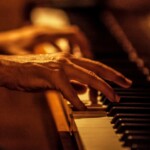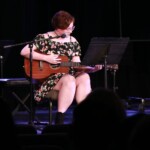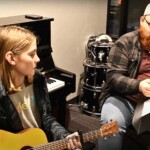Oboe, Bassoon & Beyond: The Double Reed Instruments of the Orchestra
Have you ever wondered what that long instrument was at the back of the winds, its red bell poking up above the other musicians? Or the instrument that looks like a clarinet, but isn’t it sitting with the others and sounds a bit different?
These two instruments are the oboe and bassoon—some of the oldest woodwind instruments in the orchestra. Where the clarinet and saxophone have a single reed mounted on a plastic mouthpiece, the oboe and bassoon haven a reed folded, tied together at the base, and clipped open, revealing two reeds nestled against each other. Thus they are called “double reeds.”
The origins of the oboe and bassoon can be traced as far back as ancient Greece, with the ancestral ‘aulos,” and later the ‘Shawm’ from the far East as it became popular in Europe’s medieval courts. Prominently displayed in baroque and early classical music, advancements in technology in the 18th and 19th centuries increased the range of the instruments with metal keys and pads to cover finger holes. Composers such as Handel, Bach, Haydn, and Mozart all wrote prolifically for the double reeds.
Their complicated mouthpieces are one of the reasons oboe and bassoon are often overlooked in beginner bands. However, as the student advances, a beautiful and soulful tone can develop, and is put to great use in the solos of major symphonic works in the 19th and 20th centuries. Because of their unique sounds, the instruments can also be used for playful character as well. For example, Sergei Prokofiev’s iconic Peter and the Wolf features the bassoon in the role of the grandfather and the oboe as the duck.
As the Clarinet has family members in the small, high-pitched E-flat clarinet, down to the bass and contra clarinets, so do the double reeds. At the bottom of the staff lies the rumbling contra bassoon. It has a unique look rested on the floor, with its bell often designed to curve back around over the instrument. In between the voices of the oboe and bassoon is a middle-range occupied predominantly by the English horn (Cor Anglais) and its lesser-utilized siblings the oboe d’amore and bass oboe. There is even a high-pitched piccolo oboe. And although it’s rarely heard in an orchestral setting, the bagpipe is also a part of the double reed family. Inside the chanter (the pipe on which the melody is played) is a free-vibrating double reed, as well as inside every one of its drone pipes.
The oboe and bassoon are fascinating and challenging instruments, not for the faint of heart. Oboists and bassoonists are rewarded for their hard work with bold and beautiful solos in the orchestral repertoire and charming chamber music. The next time a tear is brought to your eye and your heart-strings tugged, it might just be summoned by the dolcet tones of the double reeds.



